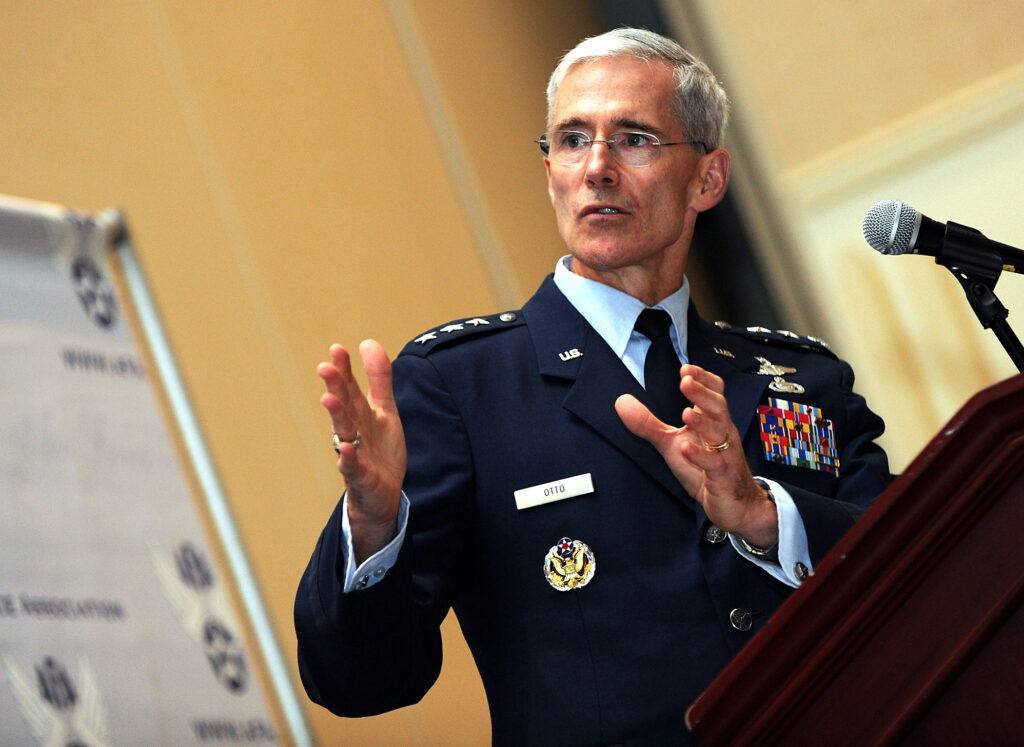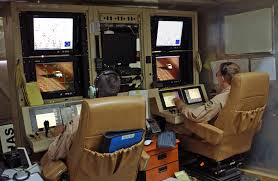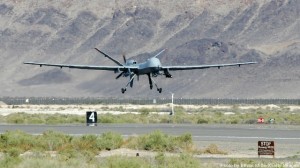How To Cut Predator, Reaper UAV Crew In Half: Lt. Gen. Otto
Posted on

Lt. Gen. Robert Otto
PENTAGON CITY: The dirty secret of so-called “unmanned” systems is they require a whole lot of men — and women — to operate them. They’re just back at base, running things remotely, rather than hands-on in the aircraft. With the Air Force drone community overworked and undermanned, the service’s intelligence chief has suggested a Solomonic solution: cut the on-the-ground crews of the famous Predator and Reaper drones in half.
The Air Force could save perhaps 1,000 drone operator positions – and solve one of its toughest personnel problems – by redesigning the (notoriously awkward) ground control stations used to fly MQ-1 Predators and MQ-9 Reapers to make them “single-seater” aircraft. Predators and Reapers currently require two crew to function: a pilot and a sensor operator.

Predator ground control station
“We’ve got pilots flying in Afghanistan in F-16s at night under night vision goggles, and they’re operating a LANTIRN pod, and they’re picking up ops recce [operations reconnaissance] – one person,” said Lt. Gen. Robert Otto, Air Force deputy chief of staff for intelligence, surveillance and reconnaissance (ISR), at an AUVSI conference. “At ground speed of zero at Creech Air Force Base, we have two people [whose aircraft is] flying 75 or 150 knots. Why haven’t we thought about architecting that into a one-person job?”
“There are certainly missions today that could be done by one woman or one man [who’s] both flying the aircraft and managing the sensors, if we architected the ground stations to enable it,” Otto said. “We could certainly design a cockpit that could be done by one for many missions with the option of being done by two for some missions.”
Such a redesign, Otto said, could have a “significant” impact on the Air Force’s current shortage of Remotely Piloted Aircraft (RPA) pilots. The Air Force has told Congress it could face a shortfall in fiscal 2016 of 400 of the 1,200 MQ-1 and MQ-9 pilots needed.
Predator and Reaper pilots have been departing the Air Force in growing numbers rather than continue to work 12 hours a day, six days a week, he said. Those conditions resulted from wartime demands for a rapid expansion of the number of daily Combat Air Patrols (CAPs) by Predators and Reapers to meet what Otto has called an “insatiable demand” for ISR even as the Air Force and its budget have shrunk.

MQ-9 Reaper drone
“We’ve been in surge operations with our MQ-1 and MQ-9 crews,” Otto said. “Those crews have been stressed about to the limit.” So have officers and enlisted analysts who handle the data the drones produce, he added. “The only light at the end of the tunnel is their form DD 214, their separation.”
Otto noted that the Defense Department has reduced the number of daily CAPs the Air Force must provide from 65 to 60. Under this “Get Well Plan,” as he called it, the Army will contribute 16 CAPs using its MQ-1C Grey Eagle, a Predator derivative, and contractors flying government RPAs will provide 10 more. All told, this will raise the daily CAPs provided to 86.
Noting suggestions the Air Force should start using enlisted personnel to fly drones, as the Army does, Otto said that while “there may be merit to that idea,” he doesn’t think it’s the solution. The problem isn’t a lack of officer pilots who can be assigned to RPAs but of instructors to train them, he said. The high pace of operations demands so many trained operators that few qualified people are left to train new personnel — which means the personnel shortage continues, a vicious circle. RPA training units are at 66 percent of full strength, he said, so the key is easing off the ISR pedal long enough for the Air Force to build up its drone instructor force.
“Until we get them [RPA training units] healthy, what we can’t do is train foreign partners,” Otto said. “So if you’re somebody in the audience that’s in the training business, there’s a potential opportunity, because the UK and France and Italy all have asked for more capability and training than what we’re able to provide, because we are stressed with trying to fix the remotely piloted aircraft enterprise.”
Subscribe to our newsletter
Promotions, new products and sales. Directly to your inbox.
